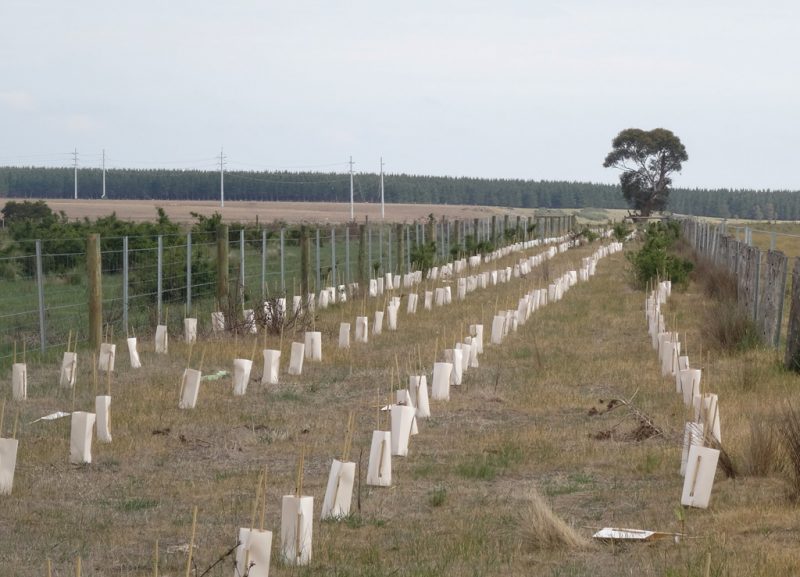
Hot dogs, doughnuts, chocolate, soft drinks. Yum! All are delicious in small quantities but ultimately damaging to our health if consumed in excess. Too much of a good thing is, well, too much. Even overconsumption of healthy foods can cause health problems. And the same is true in the plant world. Overconsumption of beneficial nutrients can also cause health problems for plants.
Australian native plants adapt to low nutrient soils. Particular species (such as many Acacia, Banksia, Hakea and Pultenaea species) are susceptible to excess nutrients, especially phosphorous. Many of these plants have a unique root system called ‘proteoid’ roots, consisting of a cluster of tiny rootlets. The general thought is that this mass of fine roots allows the plant to take up nutrients from impoverished soils, and, if fertilised excessively, the plant may take up toxic amounts of these nutrients.
It doesn’t mean native plants don’t require the basic elements of nitrogen, phosphorous, or potassium to grow; it just means we have to manage the plants’ access to these nutrients carefully.
Image: revegetation site, Australia
1) Your site’s history
Your site’s history is an essential factor to consider. A proper soil analysis is often beneficial to establish what nutrition is available or needed. A previously fertilised ex-agricultural site is unlikely to require additional fertilisation. Occasionally, the removal of excess nutrition is beneficial instead. For example, removing nutrient-rich topsoil may reduce soil nutrient load and ensure suitable soil for native grass seeding. However, fertilisation can contribute to the success of your project if your site is nutrient depleted.
2) The condition of existing vegetation
The condition of existing vegetation onsite can provide a good indication of the available nutrition. If the plants look healthy, are lush and are growing well in their regular growing season, there is probably sufficient nutrients for new seedlings to survive. Effective weed control will ensure enough nutrients are available for the new seedlings. If the condition of the existing vegetation looks unhealthy, starved and sparse even in their regular growing season, the site may benefit from the addition of fertiliser.
3) Long-term water availability
Consider the long-term water availability for the seedlings. Sometimes plants that are slower to establish are tougher in the long run, and the application of too much fertiliser can lead to excess above-ground growth that is not sustainable long term. Plants with too much lush, early growth can struggle to survive the harsh weather conditions of a dry summer, as that growth requires extra water to sustain it during the dry.
4) Weed control
Proper and suitable weed control is a significant factor when considering fertilisation. If you haven’t controlled weeds sufficiently, the fertiliser is likely to encourage more robust, healthier weeds at the expense of revegetation.
Given all of these factors, it is easy to see why fertiliser may not necessarily be the best thing to consider in a native revegetation project. However, if you’ve assessed your site and fertiliser is deemed appropriate, many native-suitable fertilisers are available from various fertiliser manufacturers. These fertilisers come in pellet, tablet or liquid form.
Fertilisers should be ‘slow release’ or ‘controlled release’. They can be applied to the soil during cultivation, included as an individual process at the time of planting or applied to the plants after seeding or planting. Avoid fertilising just before winter in frosty zones, as this could stimulate soft, sappy growth, which could get damaged by frost.
It’s wise to consider the water holding capacity and overall health of the soil. Ask yourself the following questions. Is the inclusion of water holding crystals or soil wetters helpful for hydrophobic soil? Will the introduction of mycorrhizal fungi or beneficial bacteria boost soil health and increase resistance to pests and diseases?
A sandy, hydrophobic soil with little nutrition available could benefit from applying a blended soil conditioner such as Terra Start, which incorporates zeolite, soil wetters, mycorrhizal fungi and a slow-release fertiliser. Water crystals can often be included in sites with low water-retaining soils to ensure water is available for revegetation in the early stages of its establishment. Compacted clay soil could benefit from cultivation and gypsum to ensure good penetration of water and the seedlings’ root systems.
In summary, the inclusion of fertilisers or soil ameliorants in your revegetation project can be of great benefit. Still, it’s crucial to work out what is available in the soil before applying any fertilisation or soil amendments.
In our next post we’ll look at the importance of tree protection and the most common ways to guard the young seedlings in your newly planted revegetation site.
If you have any questions relating to the planning stage of your revegetation project, feel free to reach out to our team. Please email us at info@arborgreen.com.au.
South Australia
18 Follett Close
Mount Barker SA 5251
New South Wales
14 Rennie Street,
Wetherill Park, NSW 2164
Victoria
56-60 Woodlands Drive,
Braeside, VIC 3195
Phone 1300 760 642
Prompt Australia-wide Delivery
Free* freight on all orders over $400+gst to anywhere in Australia
*excludes bulky items